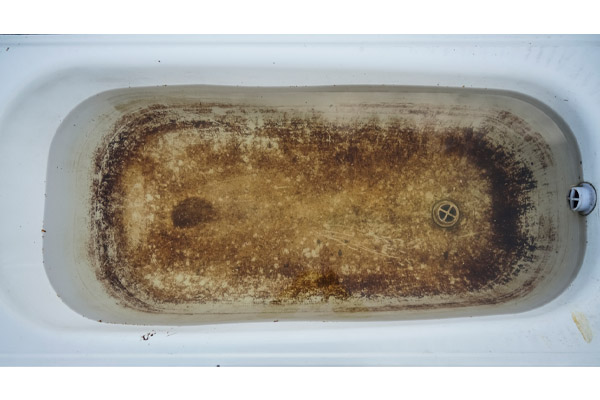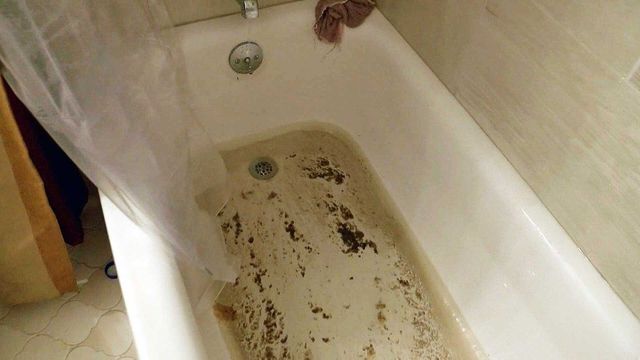Uncovering the Causes of Sewage Backflow in the Bathtub
Uncovering the Causes of Sewage Backflow in the Bathtub
Blog Article
What're your beliefs about What to Do if Sewage Starts Coming Up Through Your Bathtub?

Sewer backup in the bath tub can be a stressful and unsanitary issue for any home owner. Not only is it bothersome, but it additionally positions serious health and wellness risks and suggests underlying issues with the plumbing system. Recognizing why sewer is showing up through the bathtub is important for taking ideal action to resolve the problem effectively.
Introduction to the Concern
Common Factors for Sewage Backup
Clogs in the Sewer Line
Among the most usual reasons for sewer back-up is a blockage in the drain line. This can occur because of the buildup of debris, grease, or international things in the pipes, avoiding correct flow and causing sewage to support right into your bath tub.
Tree Root Invasion
Tree origins looking for moisture and nutrients can infiltrate drain lines with tiny splits or joints. In time, these roots can grow and broaden, creating substantial damages to the pipes and resulting in sewage backup problems.
Comprehending the Trouble
When sewer draws back up right into the bath tub, it's a clear indication of a problem with the drainage system. The wastewater that ought to be streaming away from your home is instead discovering its way back into your living space, which can result in considerable damage and health hazards.
Potential Causes
Several elements can contribute to sewage backup in the bathtub. From blockages in the sewer line to issues with the plumbing infrastructure, identifying the origin is vital for discovering an option.
Aging Framework
Older homes may have dated plumbing systems that are extra at risk to deterioration, splits, and degeneration. As pipes age, they end up being more prone to leakages and blockages, boosting the likelihood of sewer back-up incidents.
Heavy Rainfall or Flooding
During periods of heavy rainfall or flooding, the drain system might come to be overwhelmed with excess water, triggering back-ups and overflows. This can result in sewer supporting into bathtubs and other components inside the home.
Signs of Sewer Backup
Foul Odors
Unpleasant odors emanating from drains pipes or fixtures, particularly in the restroom, may show sewer back-up concerns. These odors are commonly strong and consistent, indicating a problem that requires prompt interest.
Slow Draining Fixtures
Bathtubs, sinks, and bathrooms that drain gradually or otherwise in any way could be experiencing sewer backup. If several components are impacted all at once, it's most likely that the problem stems from a typical factor, such as the major sewage system line.
Gurgling Noises
Unusual gurgling or bubbling noises coming from drains pipes when water is running in other places in your house are a sign of air caught in the plumbing system. This air buildup can result from sewage backup and should be examined immediately.
Health And Wellness Risks Related To Sewage Back-up
Contamination of Water System
Sewage back-up can contaminate the water supply in your house, positioning a severe health threat to you and your household. Direct exposure to polluted water can bring about intestinal issues, skin infections, and various other diseases.
Mold and mildew Growth
Wetness from sewage backup can produce ideal problems for mold growth in your house. Mold spores can worsen respiratory issues and create allergic reactions in delicate individuals, making prompt cleaning important.
Spread of Disease
Sewer contains unsafe microorganisms, infections, and bloodsuckers that can trigger a series of illness, consisting of hepatitis, cholera, and gastroenteritis. Coming into contact with sewage or contaminated surface areas places you at risk of infection.
Cleaning Up After Sewer Backup
Sanitation Procedures
Thoroughly disinfect and sanitize influenced locations after sewage back-up to remove dangerous bacteria and prevent mold growth. Usage ideal cleaning products and safety equipment to guarantee risk-free and reliable cleanup.
Restoration of Affected Locations
Repair any damages to floor covering, wall surfaces, or fixtures triggered by sewage back-up. Depending upon the extent of the damages, you may need to change carpeting, drywall, or various other materials to recover your home to its pre-loss problem.
Immediate Actions to Take
Shutting Off Water Supply
In the event of sewer backup, it's important to turn off the water system to avoid further contamination and damage. Locate the main water shutoff valve in your home and closed it off until the concern can be dealt with.
Contacting a Professional Plumber
Taking care of sewage back-up is not a DIY work. Contact a qualified plumber with experience in taking care of sewage-related concerns to analyze the scenario and perform essential fixings or cleanings.
Avoiding Contact with Contaminated Water
Until the sewage back-up is solved, avoid contact with infected water to avoid the spread of germs and virus. Use protective gear if you should be in the affected location and wash your hands extensively afterward.
Safety nets
Normal Upkeep of Sewage System Lines
Schedule routine evaluations and upkeep of your drain lines to identify and resolve prospective issues prior to they intensify into major troubles. This can include cleaning debris, evaluating for tree origin invasion, and fixing any broken pipes.
Installing Bayou Valves
Consider mounting backwater shutoffs in your plumbing system to stop sewage from flowing back right into your home during durations of heavy rainfall or flooding. These shutoffs automatically close when water draws back up, protecting your home from contamination.
Correct Disposal of Household Waste
Prevent purging anything apart from toilet tissue and human waste down the toilet to prevent blockages and obstructions in the sewer line. Dispose of grease, oil, and various other home chemicals properly to decrease the risk of plumbing problems.
Why is there sewage coming up from my bathtub?
These gas fumes, like hydrogen sulfide – the gas that leaves a rotten egg smell in its wake and is highly flammable and toxic – can be hazardous to your health. Sewage poses major health risks as it contains harmful bacteria and microorganisms that can be dangerous if exposed to them.
Sewage cleanup should be considered an emergency.
So, why is there sewage coming up from your bathroom? There are several common causes of a sewage backup.
The most common reason for sewage coming up through your bathroom is a clogged sewer line. All plumbing in your bathroom connects to a single drain pipe that leads to the sewer line under your house. This drain line carries all wastewater and sewage away from your home to the city’s sewer system.
When the sewer line becomes clogged or blocked, wastewater has nowhere to go but back toward your house. This results in sewage coming up through your drains, often starting with your tub or shower.
Another culprit may be the sewage ejector pump, which is used when a bathroom, laundry room or any other type of plumbing fixture is located below the level of the main sewer or septic line flowing from the house. Most commonly, ejector pumps are used in homes with basement bathrooms or laundry rooms.
When you experience sewage coming up through your bathtub, it’s always best to contact a professional. Attempts to fix a clogged sewer line without experience often lead to more plumbing damage.
Make sure that no one enters the affected area, and open as many windows as possible. Pre-treat the flooded area with small splashes of chlorine bleach. Wear protection gear like rubber gloves, a mask, and water-resistant coveralls.
https://www.shawlocal.com/the-herald-news/sponsored/2022/08/17/omega-plumbing-10199038/

I'm certainly very intrigued by Why is There Sewage Coming Up Through the Bathtub and I am hoping you enjoyed my post. If you please set aside a second to share this write-up if you enjoyed reading it. Thanks for going through it.
Book Inspection
Report this page